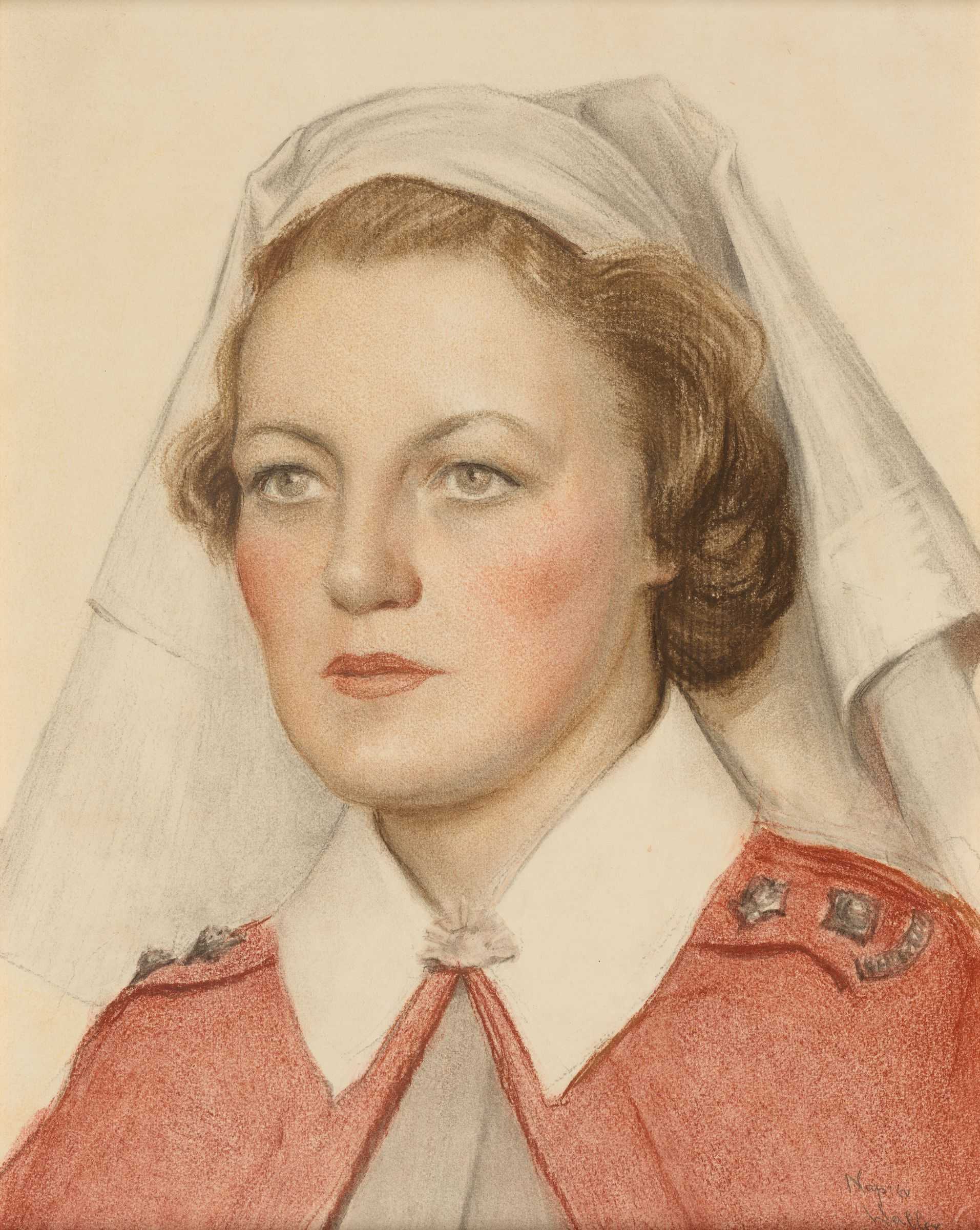In 2005 Australians, like others around the world, will reflect on the 60th anniversary of the end of World War II and the 90th anniversary of our country's first major commitment to war in World War I. It is therefore a year of particular focus on commemorating and honouring the thousands who lost their lives fighting for ournation, as well as those who lost their lives as innocent civilians.
The National Portrait Gallery holds numerous portraits of significant individuals who made a massive and often incomprehensible sacrifice in both of these conflicts. Simpson and his donkey, one of Australia's most popular and loved duos, are immortalized in a bronze maquette created by Peter Corlett. Other important subjects who adorn the walls of the Permanent Collection and draw respect from visitors who view them in admiration include Major General Paul Cullen, Colonel Edward (Weary) Dunlop, Lt. A R. Cutler VC, General Sir John Monash, and one of the National Portrait Gallery's newest acquisitions, Nancy Wake. Another, lesser known, but no less important subject is World War II nurse Margaret Anderson, by Napier Waller.
Margaret Anderson GM (1915-1995) served with the Australian Army Nursing Service during World War II in Singapore, 1942. On the 11th of February, at two hours' notice, Anderson was evacuated to Australia and boarded an old cargo ship that had hastily been refitted as a hospital ship. The Empire Star. The ship was designed to accommodate 20 passengers, but on this trip Anderson was accompanied by over 2,100 other Australian, British and Indian nurses as well as British troops and civilian women and children. A day into the trip, the ship was targeted by a Japanese air raid and bombed by 92 Japanese bombers. Accounts differ, but it is estimated that 17 men were killed and 32 were injured. Leaving the safety of the hold and under heavy fire. Anderson sheltered soldiers with her own body and attended to the wounded. For her aaions she was awarded the George Medal.
In a telegram dispatched (in code) by His Excellency the Governor-General, Lord Gowrie to the Secretary of State for Dominion Affairs, Canberra 16th April, 1942, the reason for the recommendation was outlined: 'For bravery and devotion to duty when attending wounded on board motor vessel Empire Star during bombing and machine gun attacks by Japanese aeroplanes on February 12. Anderson was in cabin with some badly wounded who were being smothered by smoke and fumes. Thinking the raid had passed she assisted in dragging men to deck when aeroplanes returned and again attacked ship machine gunning decks. She remained on deck sheltering badly injured patients and protecting one with her own person by throwing herself across him' (Margaret Anderson's official war file, Australian War Memorial).
Mervyn Napier Waller (1894-1972), painter, graphic artist, teacher, and stained-glass designer studied art at the National Gallery of Victoria's school before enlisting at the beginning of World War I as an artilleryman. Waller lost his right arm at the battle of Bullecourt in 1917 After teaching himself to paint with his left hand, he went on to pioneer the linocut in Australia and produce illustrations for the book War Sketches on the Somme Front. Waller is best known as the artist who designed the mosaics for the Australian War Memorial's Hall of Memory, a project that spanned twenty-one years and which is his largest public work.
In the drawn pastel portrait Waller has presented Anderson in an impeccable demeanour, in her nurse's uniform. Anderson, who would have been 27 at the time of drawing, looks out beyond the viewer, staring into the distance with a steady and determined gaze. Yet Waller's chosen medium, pastel, a medium traditionally associated with the expression of softness, brings out another quality in the subject. This portrait was one of a series used in The Australasian newspaper, a patriotic publication, which noted that Anderson 'symbolises the steadfast, efficient spirit of a glorious branch of the services'.
















